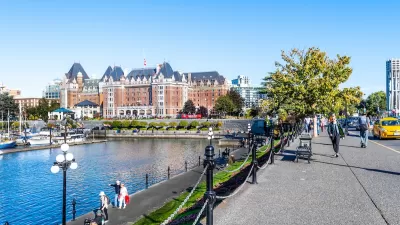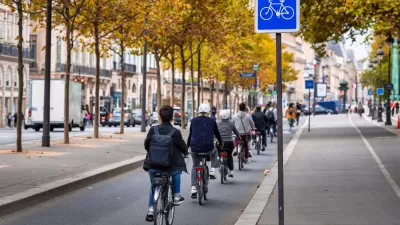Has the profession given in to corporate interests, and is there another way forward?

In an article in Yes Magazine, Marianne Dhenin asserts that “today, cities are being planned and developed to serve the interests of elites and big corporations rather than the communities that call them home.”
Using an example from Philadelphia, Dhenin shows how “adverse outcomes of planning and design decisions are shouldered disproportionately by already marginalized groups, including poor communities and communities of color,” arguing that this is more of a feature than a bug. According to planning history and theory professor and author of Against the Commons: A Radical History of Urban Planning Álvaro Sevilla-Buitrago, “This is not the dark side of planning … This is planning.”
Dhenin points to the more subtle ways that planning undermines communities in the post-urban renewal era, when wholesale displacement is more frowned upon, such as ‘defensive urban design,’ which makes public spaces hostile to people.
But there is another way, Sevilla-Buitrago says. Dhenin describes grassroots campaigns in Philadelphia and Oakland that buck the trend by fighting for community land trusts that put more power in the hands of low-income residents. While these effort were led by everyday people passionate about their communities, “Professional planners still have a vital role to play in reorienting urban space to better serve the people.” Planners can support community-oriented efforts by connecting local governments to marginalized groups, elevating their voices in the planning process, and working to keep the city accountable to its most vulnerable residents.
FULL STORY: Urban Planning for the People

Planetizen Federal Action Tracker
A weekly monitor of how Trump’s orders and actions are impacting planners and planning in America.

Congressman Proposes Bill to Rename DC Metro “Trump Train”
The Make Autorail Great Again Act would withhold federal funding to the system until the Washington Metropolitan Area Transit Authority (WMATA), rebrands as the Washington Metropolitan Authority for Greater Access (WMAGA).

The Simple Legislative Tool Transforming Vacant Downtowns
In California, Michigan and Georgia, an easy win is bringing dollars — and delight — back to city centers.

The States Losing Rural Delivery Rooms at an Alarming Pace
In some states, as few as 9% of rural hospitals still deliver babies. As a result, rising pre-term births, no adequate pre-term care and "harrowing" close calls are a growing reality.

The Small South Asian Republic Going all in on EVs
Thanks to one simple policy change less than five years ago, 65% of new cars in this Himalayan country are now electric.

DC Backpedals on Bike Lane Protection, Swaps Barriers for Paint
Citing aesthetic concerns, the city is removing the concrete barriers and flexposts that once separated Arizona Avenue cyclists from motor vehicles.
Urban Design for Planners 1: Software Tools
This six-course series explores essential urban design concepts using open source software and equips planners with the tools they need to participate fully in the urban design process.
Planning for Universal Design
Learn the tools for implementing Universal Design in planning regulations.
Smith Gee Studio
City of Charlotte
City of Camden Redevelopment Agency
City of Astoria
Transportation Research & Education Center (TREC) at Portland State University
US High Speed Rail Association
City of Camden Redevelopment Agency
Municipality of Princeton (NJ)




























